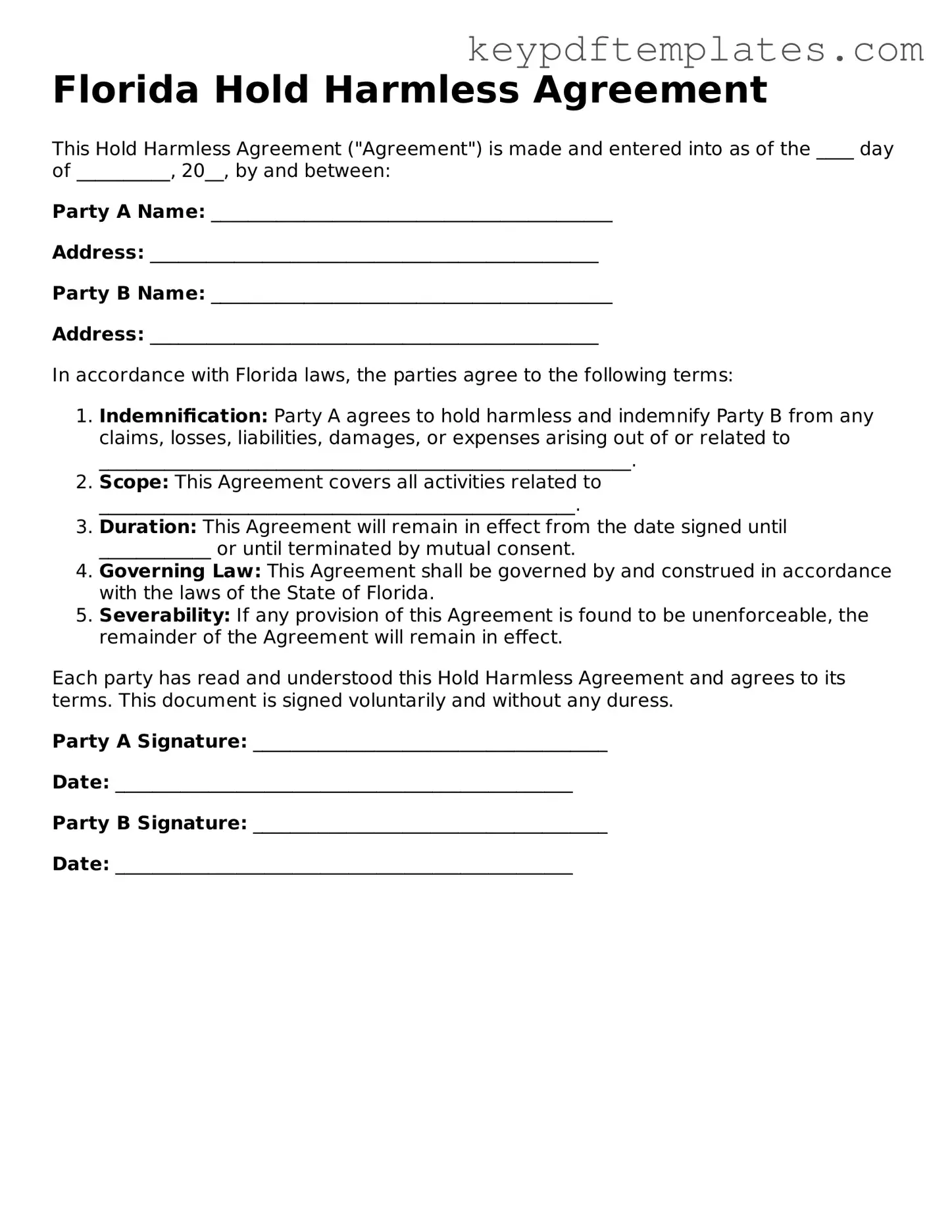Legal Hold Harmless Agreement Document for the State of Florida
The Florida Hold Harmless Agreement is a legal document designed to protect one party from liability or claims that may arise during a specific activity or event. This agreement outlines the responsibilities of each party involved and ensures that one party will not hold the other accountable for certain risks. Understanding this form is essential for individuals and businesses engaging in activities that may expose them to potential legal issues.
Modify Document Online
